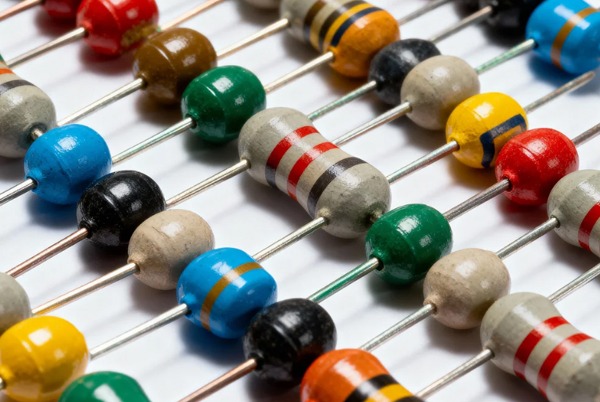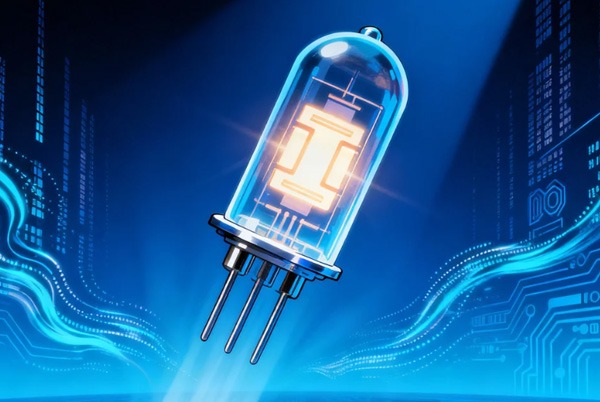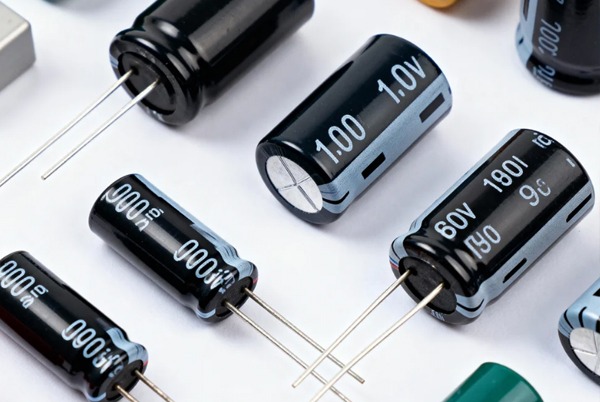In the field of electronic engineering, the alphabetic symbols representing electronic components serve as the fundamental language for circuit design and maintenance. These symbols not only help engineers and technicians quickly identify components but also enhance the efficiency of circuit analysis.
Table of Contents
1. Capacitor – Letter Symbol: C
A capacitor is a passive component used to store electrical energy, widely employed in electronic circuits for functions such as voltage smoothing, filtering, and timing. In circuit diagrams, capacitors are typically denoted by the letter “C”. For example, a 10μF electrolytic capacitor might be labeled as C1. Key parameters of a capacitor include capacitance (measured in Farads, F), voltage rating, and type (such as electrolytic or ceramic capacitors).
Functions and Applications:
- Filtering: In power supply circuits, capacitors smooth the output voltage and reduce ripple.
- Coupling: In amplifiers, capacitors are used to pass AC signals while blocking DC components.
- Timing: Combined with resistors to form RC circuits, they generate time delays or oscillation signals.
Keywords: Capacitor symbol, capacitance value, electrolytic capacitor, ceramic capacitor, filter circuit, RC timing circuit.
2. Resistor – Letter Symbol: R

A resistor is a passive component that limits the flow of electric current, measured in Ohms (Ω). In circuit diagrams, resistors are denoted by the letter “R”. For instance, a 100-ohm resistor might be labeled as R1. The primary functions of resistors include voltage division, current limiting, and generating thermal effects.
Functions and Applications:
- Current Limiting: Protects components like LEDs from damage due to excessive current.
- Voltage Division: Forms voltage dividers with other resistors to provide specific voltages in circuits.
- Thermal Effect: Converts electrical energy into heat in heating devices.
Keywords: Resistor symbol, Ohm’s Law, voltage divider circuit, current limiting resistor, types of resistors.
3. Inductor – Letter Symbol: L
An inductor is a passive component that stores magnetic energy, measured in Henries (H). In circuit diagrams, inductors are denoted by the letter “L”. For example, a 100mH inductor might be labeled as L2. Inductors are commonly used in filtering, oscillation, and energy storage circuits.
Functions and Applications:
- Filtering: In power supply circuits, inductors combine with capacitors to form LC filters, suppressing high-frequency noise.
- Oscillation: Combined with capacitors to form LC oscillation circuits for generating high-frequency signals.
- Energy Storage: In switching power supplies, inductors store energy and stabilize current.
Keywords: Inductor symbol, LC filter, oscillation circuit, inductance value, magnetic energy storage.
4. Transistor – Letter Symbol: Q (Bipolar) or J (Field-Effect)
A transistor is a semiconductor component used for amplifying or switching signals. Bipolar transistors are denoted by the letter “Q”, while field-effect transistors are denoted by “J”. For example, an NPN transistor might be labeled as Q1. Transistors are core components in modern electronic devices.
Functions and Applications:
- Amplification: In audio amplifiers, transistors amplify weak signals.
- Switching: In digital circuits, transistors act as switches to control current flow.
- Types: Includes NPN and PNP bipolar transistors, as well as MOSFET field-effect transistors.
Keywords: Transistor symbol, NPN transistor, field-effect transistor, amplification circuit, switching circuit.
5. Diode – Letter Symbol: D

A diode is a semiconductor component that allows current to flow in one direction only. In circuit diagrams, diodes are denoted by the letter “D”. For example, a 1N4001 rectifier diode might be labeled as D1. Diodes are widely used in rectification, protection, and signal modulation circuits.
Functions and Applications:
- Rectification: Converts alternating current (AC) to direct current (DC).
- Protection: Prevents damage to sensitive components from reverse current.
- Signal Modulation: Used in RF circuits for signal modulation.
Keywords: Diode symbol, rectifier diode, reverse protection, unidirectional conduction, 1N4001.
6. Integrated Circuit (IC) – Letter Symbol: IC
An integrated circuit is a microcircuit that integrates multiple electronic components onto a single chip. It is denoted by the letters “IC” in circuit diagrams. For example, an LM741 operational amplifier might be labeled as IC1. Integrated circuits are the core of modern electronic devices such as computers and mobile phones.
Functions and Applications:
- Signal Processing: Operational amplifiers are used to amplify and process analog signals.
- Digital Logic: Microprocessors perform calculations and control tasks.
- Power Management: ICs are used for voltage regulation and power distribution.
Keywords: Integrated circuit symbol, types of ICs, microprocessor, operational amplifier, power management IC.
7. Switch – Letter Symbol: SW
A switch is a component used to control the connection or disconnection of a circuit. In circuit diagrams, switches are denoted by the letters “SW”. For example, a push-button switch might be labeled as SW1. Switches are widely used in power control, user interfaces, and safety circuits.
Functions and Applications:
- Power Control: Turns device power on or off.
- User Input: Push-button switches are used for user interaction.
- Safety Protection: Cuts off the circuit in case of overload.
Keywords: Switch symbol, push-button switch, circuit control, power switch, safety protection.
8. Sensor – Letter Symbol: S
A sensor is a component that converts physical quantities (such as temperature, light, or pressure) into electrical signals. In circuit diagrams, sensors are denoted by the letter “S”. For example, a temperature sensor might be labeled as S1. Sensors are key components in IoT and automation systems.
Functions and Applications:
- Environmental Monitoring: Temperature, humidity, and light sensors are used in smart homes.
- Industrial Control: Pressure sensors monitor the status of mechanical systems.
- Medical Devices: Heart rate sensors are used for health monitoring.
Keywords: Sensor symbol, temperature sensor, IoT sensor, environmental monitoring, signal conversion.
9. Power Supply – Letter Symbol: V
A power supply is a device that provides electrical energy. In circuit diagrams, power supplies are denoted by the letter “V”. For example, a 5V power supply might be labeled as Vcc. Power supplies convert AC to DC and provide a stable voltage to circuits.
Functions and Applications:
- Voltage Conversion: Converts high-voltage AC to low-voltage DC.
- Voltage Regulation: Ensures stable output voltage and prevents fluctuations.
- Power Distribution: Distributes electrical energy to multiple components.
Keywords: Power supply symbol, voltage conversion, regulated power supply, Vcc, power distribution.
10. Connector – Letter Symbol: J
A connector is a component used to link different parts of a circuit. In circuit diagrams, connectors are denoted by the letter “J”. For example, a plug might be labeled as J1, and a socket as J2. Connectors ensure the reliable transmission of electrical signals.
Functions and Applications:
- Signal Transmission: Connects cables and circuit boards.
- Modular Design: Allows for quick replacement of components.
- Power Connection: Provides power interfaces.
Keywords: Connector symbol, plug and socket, signal transmission, modular connection, PCB connector.
Summary of Alphabetical Symbols for Electronic Components
| Component | Letter Symbol | Primary Function | Common Applications |
|---|---|---|---|
| Capacitor | C | Stores electrical energy, smoothes voltage | Filtering, timing, coupling |
| Resistor | R | Limits current, divides voltage | Current limiting, voltage division, and heating |
| Inductor | L | Stores magnetic energy, filters | LC filters, oscillation circuits |
| Transistor | Q/J | Amplifies or switches signals | Amplifiers, digital switches |
| Diode | D | Allows unilateral current flow, rectifies | Rectification, protection, modulation |
| Integrated Circuit | IC | Integrates multiple functions | Signal processing, digital logic |
| Switch | SW | Controls circuit connection/disconnection | Power control, user input |
| Sensor | S | Converts physical quantities to electrical signals | Environmental monitoring, industrial control |
| Power Supply | V | Provides stable electrical energy | Voltage conversion, regulation |
| Connector | J | Connects different parts of a circuit | Signal transmission, modular design |
